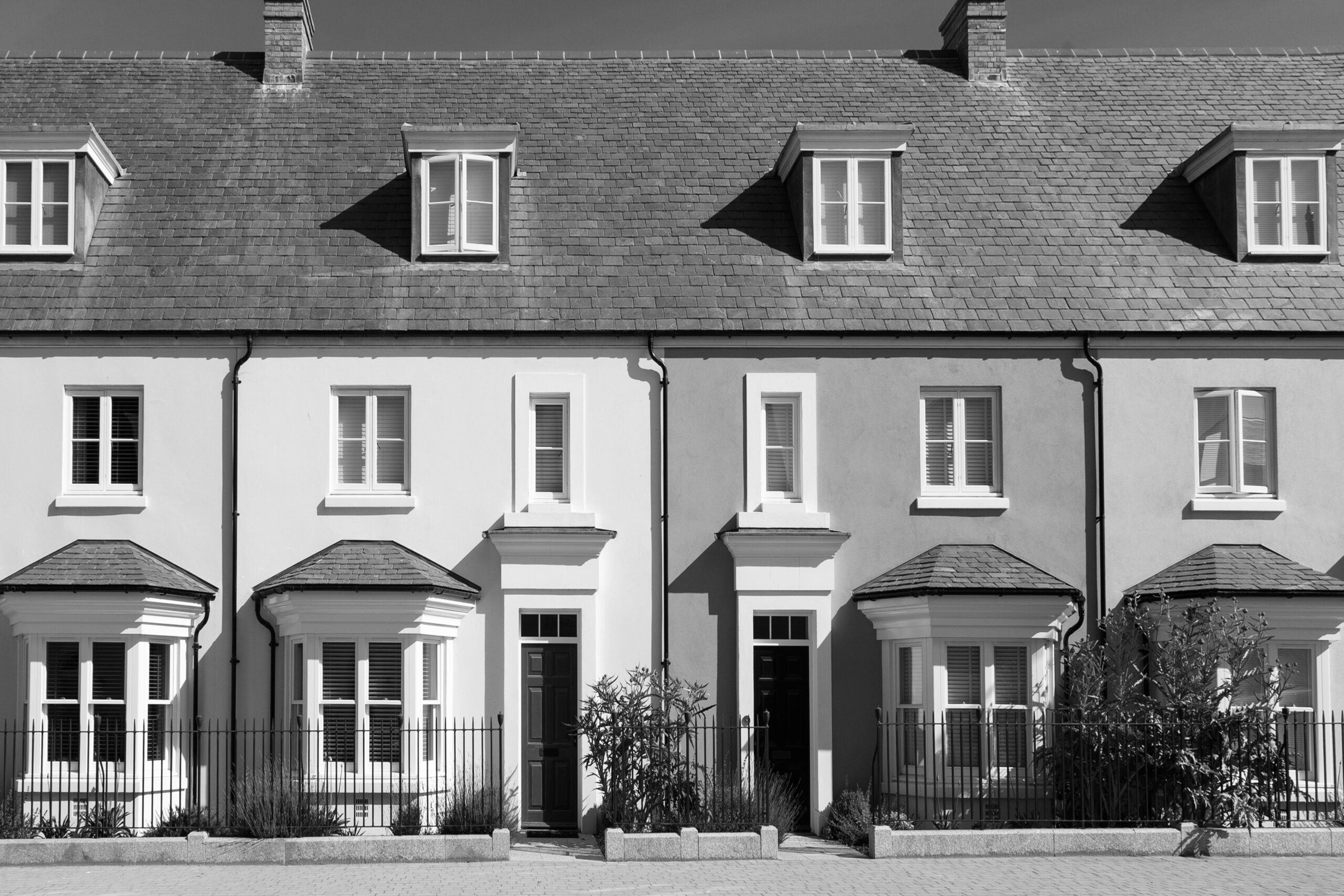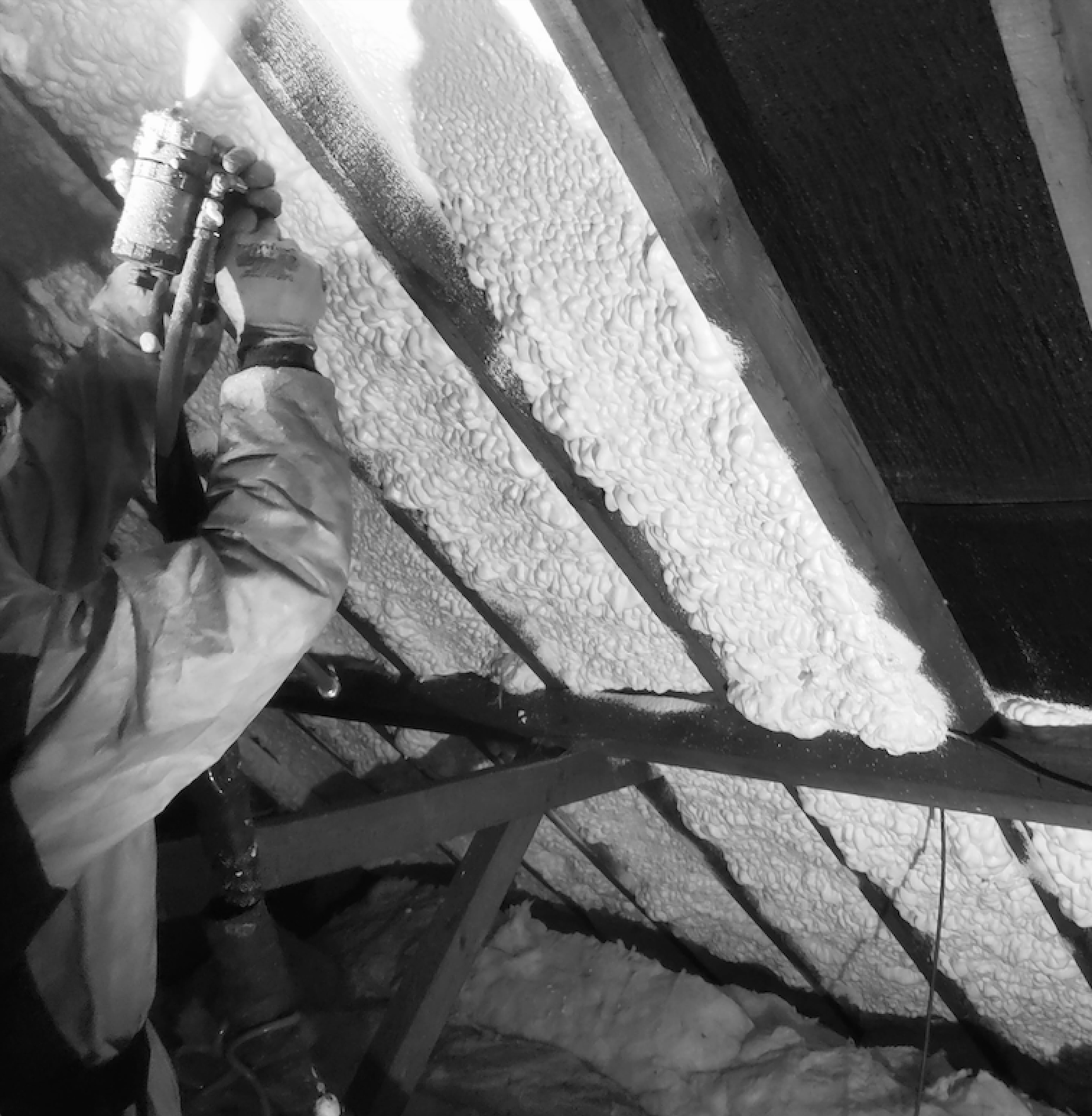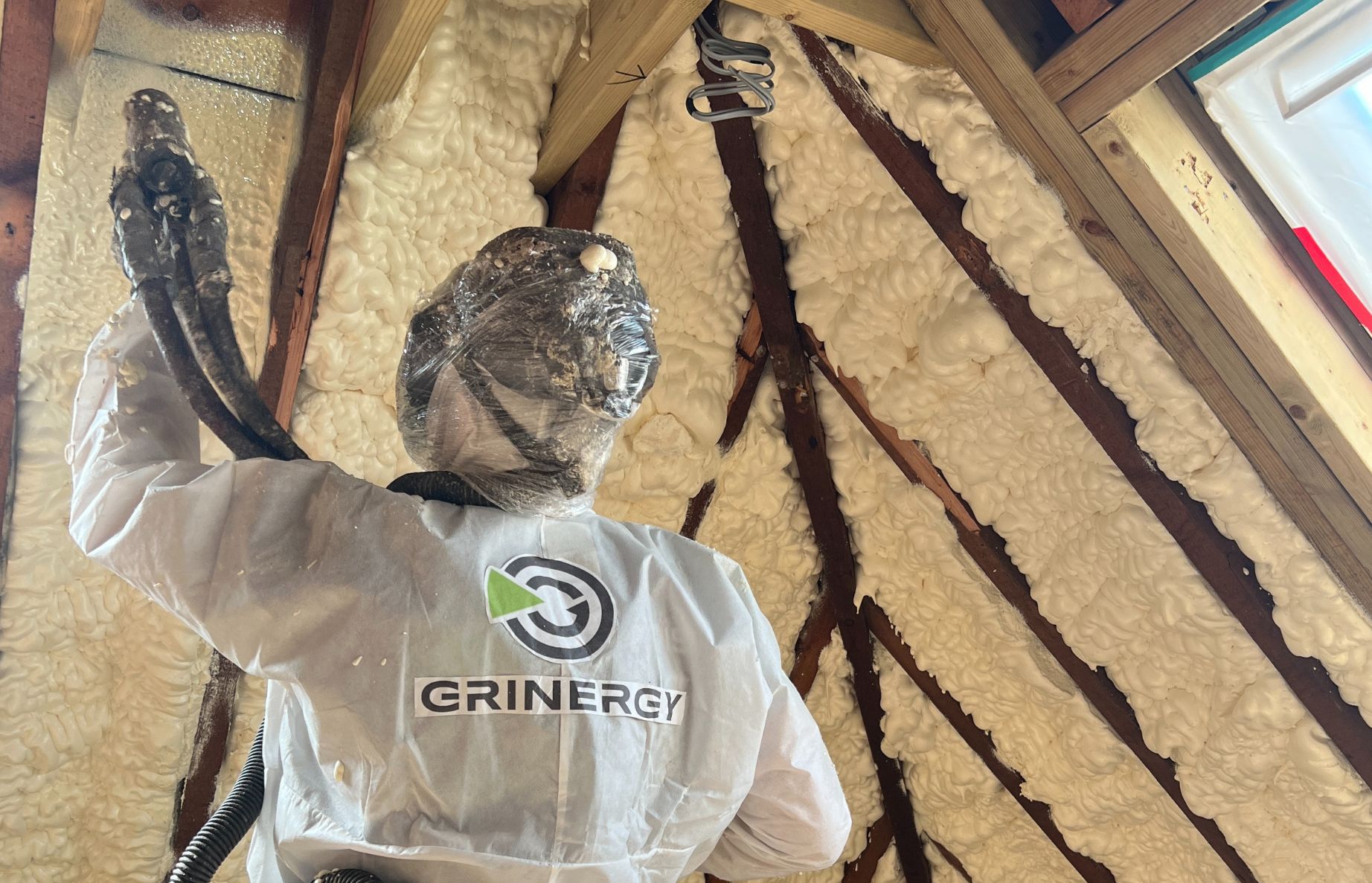Spray Foam Insulation: A Comprehensive Guide to Energy Efficiency
Are you looking for an effective way to improve the energy efficiency of your home or office? Look no further than spray foam insulation.
In this article, we will explore spray foam insulation, its benefits, installation process; a complete spray foam insulation guide.
By the end, you’ll have a thorough understanding of how this remarkable insulation method can save you money and reduce your carbon footprint.
What is Spray Foam Insulation?
Spray foam insulation is a type of insulation material that is applied as a liquid and expands into a foam, filling gaps, cracks, and voids in walls, ceilings, and other surfaces. It provides an airtight seal, effectively preventing air leakage and heat transfer.
Spray foam insulation is known for its high R-value, which measures its thermal resistance. This means it has excellent insulating properties, making it highly effective in controlling temperature and reducing energy consumption.
Benefits of Spray Foam Insulation
Spray foam insulation offers numerous benefits compared to traditional insulation methods. Some of the key advantages include:
Energy Efficiency
Spray foam insulation forms a seamless barrier that minimizes air infiltration, reducing the need for excessive heating or cooling. This leads to significant energy savings and lower utility bills.
Improved Indoor Comfort
By sealing gaps and cracks, spray foam insulation prevents drafts and cold spots, creating a more comfortable living or working environment.
Noise Reduction
Spray foam insulation acts as a sound barrier, reducing noise transmission from outside sources.
Enhanced Air Quality
The airtight seal provided by spray foam insulation helps keep out pollutants, allergens, and moisture, improving indoor air quality.
Longevity and Durability
Spray foam insulation can last for several decades without losing its insulating properties, making it a long-term investment.
Types of Spray Foam Insulation for Energy-efficient Homes
There are two primary types of spray foam insulation: open-cell and closed-cell foam.
Open-cell Foam
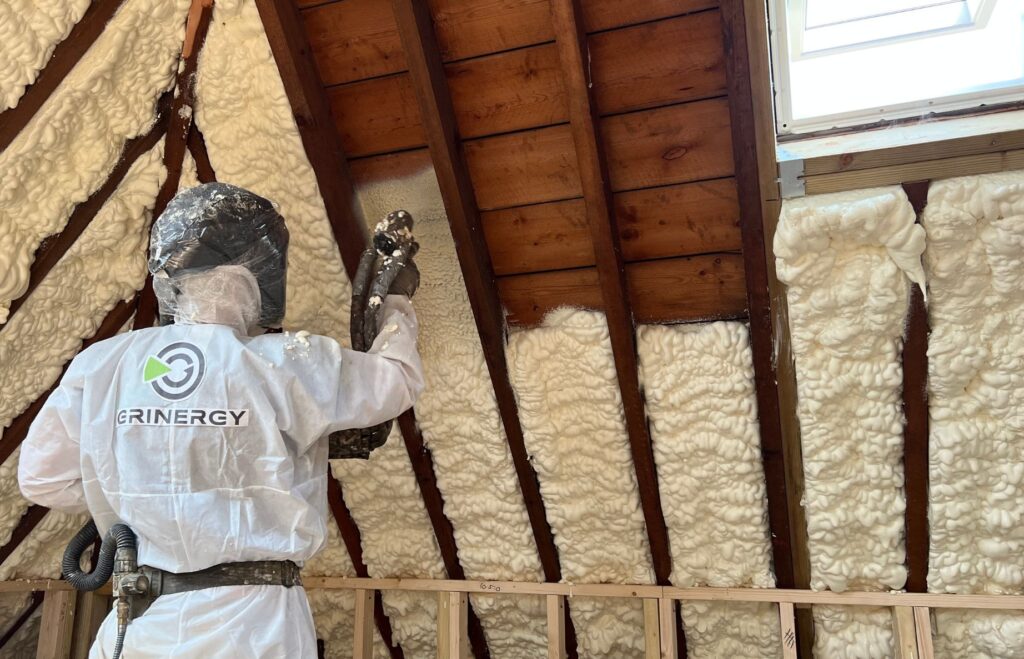
Open-cell foam is a lighter and less dense type of spray foam insulation; an excellent option for soundproofing and insulation in interior walls. It has a spongy texture and is more flexible compared to closed-cell foam.
Open cell spray foam insulation also enables the vapor generated within the home’s kitchen and bathroom to travel through a cell layer, thus facilitating breathability. This feature provides an effective solution for maintaining a comfortable indoor environment while preserving insulation efficiency.
Closed-cell Foam
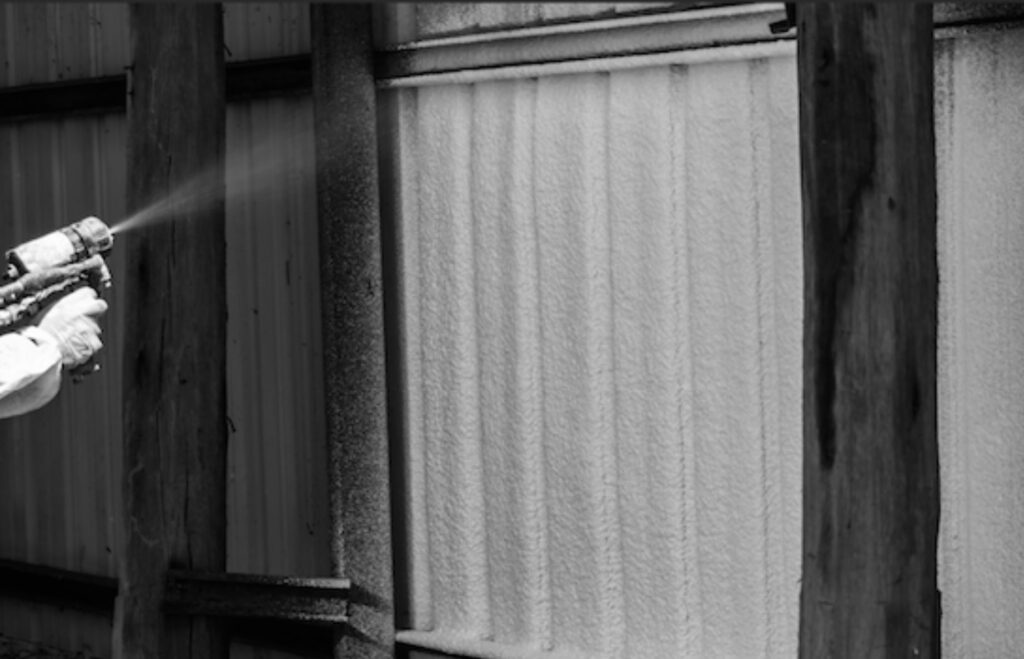
Closed-cell foam is denser and more rigid than open-cell foam. It provides a stronger and more effective air barrier. Closed-cell foam is commonly used in areas prone to moisture, such as basements and crawl spaces, as it acts as a vapor barrier.
How Does Spray Foam Insulation Work?
The process of applying spray foam insulation involves mixing two chemical components, polyol resin, and isocyanate, which react to create an expanding foam.
The foam is sprayed onto surfaces using specialized equipment, where it expands and adheres to the substrate, forming a solid layer of insulation.
The expansion of the foam allows it to fill even the smallest cracks and crevices, ensuring a tight seal. Once cured, the foam hardens and becomes a durable insulation material.
Factors to Consider Before Choosing Spray Foam Insulation
Before opting for spray foam insulation, there are a few factors to consider:
Cost
Spray foam insulation generally comes at a higher initial cost compared to other insulation methods. However, its long-term energy savings often outweigh the upfront investment.
Installation
Spray foam insulation should be installed by trained professionals to ensure proper application and optimal performance.
Building Code and Regulations
Familiarize yourself with local building codes and regulations regarding the use of spray foam insulation.
Accessibility
Spray foam insulation requires access to the areas where it will be applied. Ensure that the space is accessible and prepared for installation.
Steps to Install Spray Foam Insulation
Step #1 – Preparation
The area to be insulated should be clean and free from debris. Cover surfaces that need protection, such as windows and floors.
Step #2 – Mixing and Application
The two components of spray foam insulation are mixed in a spray gun, and the foam is applied to the desired surfaces. The foam expands rapidly to fill voids and crevices.
Step #3 – Curing
The foam takes a few hours to cure and harden. During this time, it’s crucial to ensure proper ventilation for any fumes produced during the curing process.
Step #4 – Trimming for further drylining installation if required
Once the foam is fully cured, excess foam can be trimmed to achieve a smooth and even surface for installation of plasterboard or other finishing materials specified.
Common Applications of Spray Foam Insulation
Spray foam insulation has a wide range of applications, including:
Residential Buildings
It is commonly used in attics, walls, basements, and crawl spaces to improve energy efficiency and comfort.
Commercial Buildings
Spray foam insulation is ideal for commercial spaces, such as offices, warehouses, and manufacturing facilities, providing energy savings and noise reduction.
Roofs
Spray foam insulation can be applied to the underside of roofs to create a thermal barrier and prevent heat loss.
Pipes and Ductwork
Insulating pipes and ductwork with spray foam insulation helps prevent condensation and temperature fluctuations.
Maintenance and Care for Spray Foam Insulation
To ensure the longevity and performance of spray foam insulation, follow these maintenance tips:
Regular Inspections
Periodically inspect the insulation for any signs of damage, such as cracks or gaps. Repair any issues promptly to maintain its effectiveness.
Moisture Control
Keep an eye out for moisture buildup, as excessive moisture can affect the insulation’s performance. Address any leaks or water-related issues promptly.
Seal Gaps and Cracks
Over time, gaps and cracks may develop. Seal them with additional foam insulation or appropriate sealants to maintain the insulation’s integrity.
Cost of Professional Spray Foam Insulation Service

The cost of spray foam insulation varies depending on several factors, such as the size of the area to be insulated, the type of foam used, thickness of the insulation required and type of access the the work area, time needed for the project installation, and more.
On average, the cost of professional spray foam insulation installation is approximately £20–£40 per square meter £30 – £55 per m2, including labour and materials.
While the initial cost may be higher than other insulation methods, long-term energy savings can offset the investment.
Conclusion
Spray foam insulation is a versatile and effective method of insulating residential and commercial spaces. Its ability to create an airtight seal, provide superior thermal resistance, and enhance energy efficiency makes it a popular choice.
By understanding the benefits, installation process, and maintenance considerations in this spray foam insulation guide, you can make an informed decision about incorporating spray foam to insulate your property.
Spray Foam Insulation FAQs
Is spray foam insulation suitable for all types of buildings?
Yes, spray foam insulation is suitable for various types of buildings, including residential, commercial, and industrial structures.
Can I install spray foam insulation myself?
While it is possible to do the installation using a DIY kit, but it is recommended to hire trained professionals for the installation of spray foam insulation to ensure proper application, quality finish and safety.
How long does spray foam insulation last?
When installed correctly and well-maintained, spray foam insulation can last for several decades without losing its insulating properties.
Can spray foam insulation help with soundproofing?
Yes, spray foam insulation acts as a sound barrier, reducing noise transmission from outside sources and improving indoor acoustics.
Is spray foam insulation safe for the environment?
Spray foam insulation can have environmental implications due to its chemical components. Opting for low-VOC or eco-friendly options can minimize the impact.

